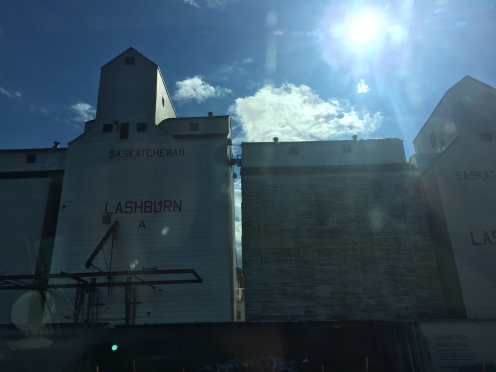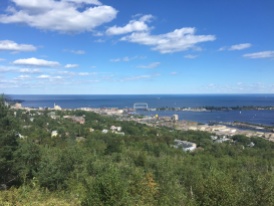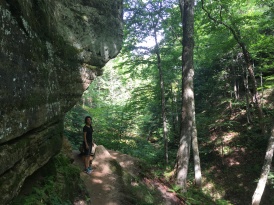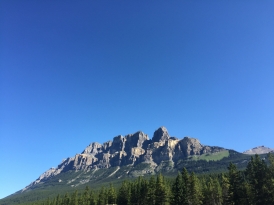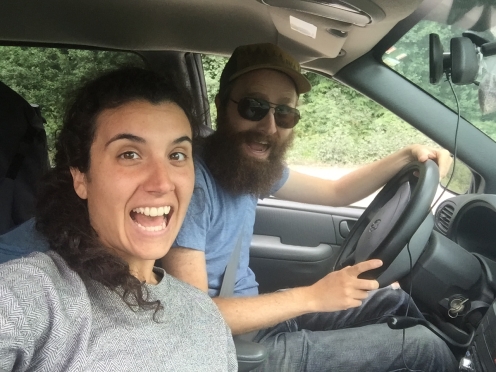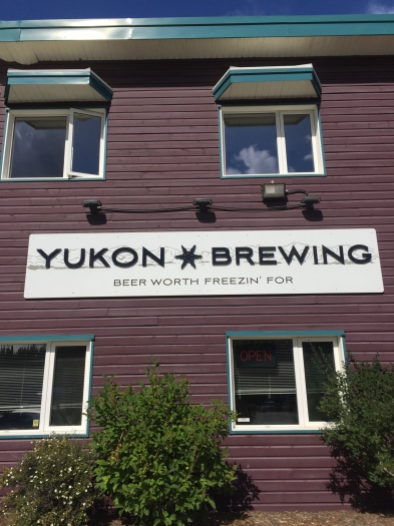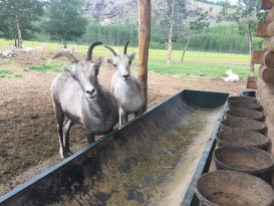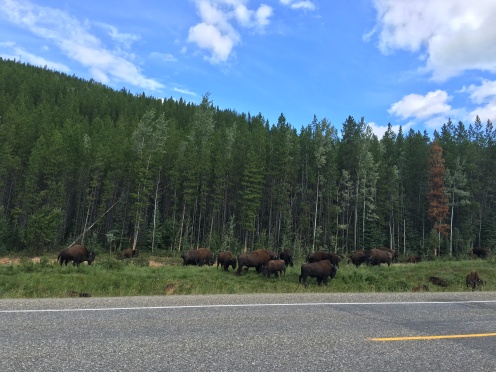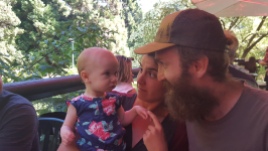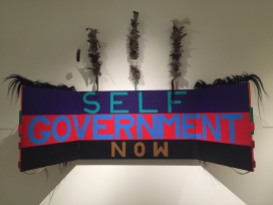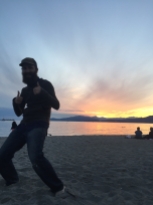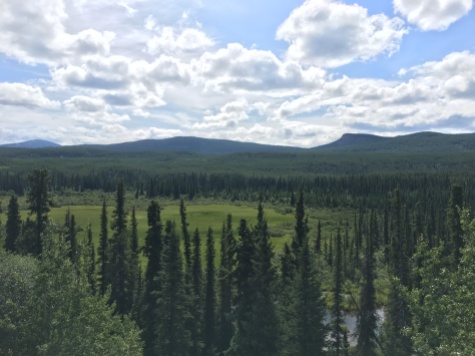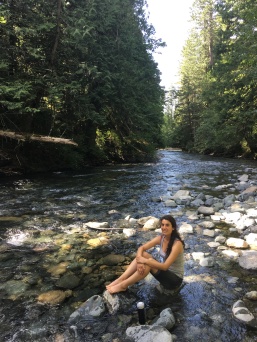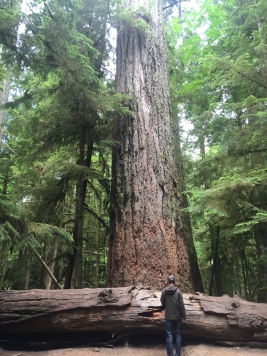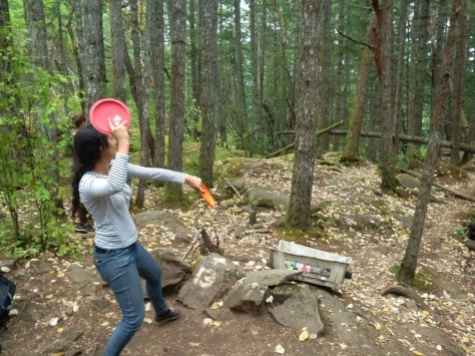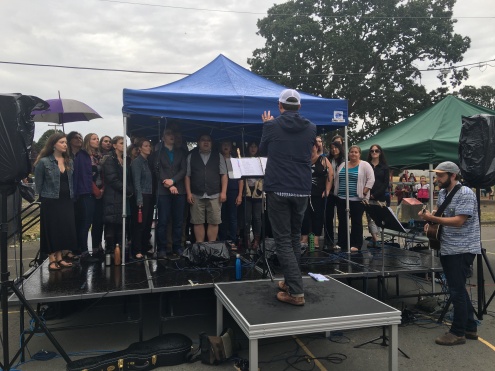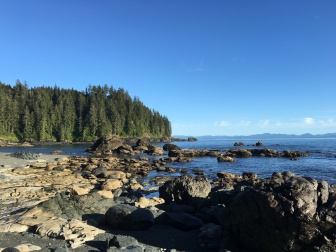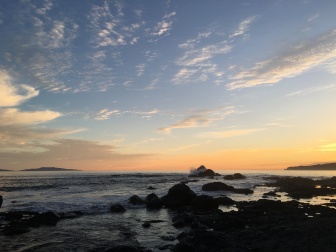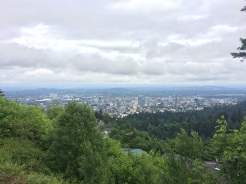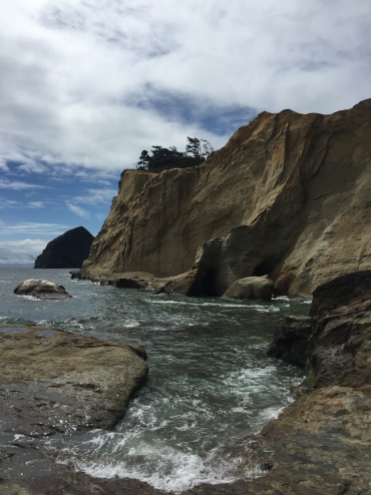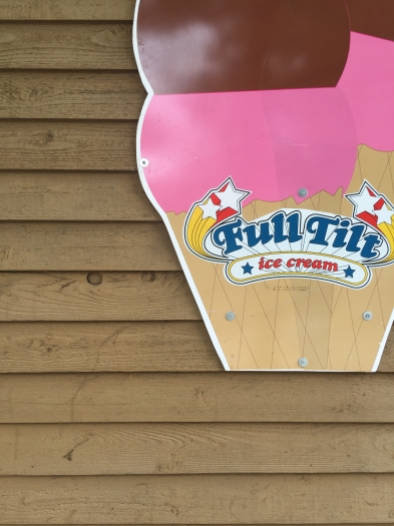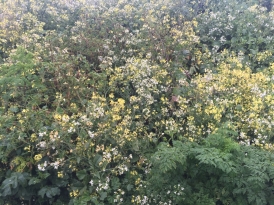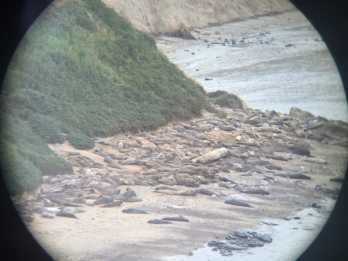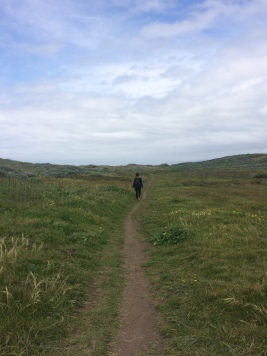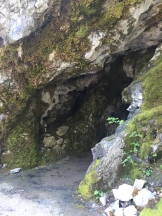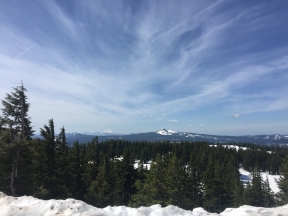There once was a time when the only help you had on a road trip was a map and maybe a guidebook and some local pamphlets. That is not today. Now with smart phones and an internet connection almost anywhere, there is a huge amount of information just a couple of taps away.
As usual, we used our phones to browse the web, check the weather, take photos and videos, and catch up on the news, but here are some of the other, more specialized apps that we found useful on the trip.
Navigation
On a road-trip, knowing how to get from A to B is the most important thing. Thanks to the generosity of Amalia’s former co-workers, we actually had a dedicated GPS device on our trip (a Garmin nüvi 2597), so once we knew where we were going, we programmed it in and didn’t have to worry about using our phones. But, if you don’t have a GPS device, a phone and mapping app of your choice will work just fine.

Roadtrippers (iOS | Android): This was the website/application combo we used to map our trip before we left. You plug-in a place of interest, and Roadtrippers will add it to your route. Of course, depending on what other destinations you already have plugged in, Roadtrippers will find the best point in your journey to add the new destination and figure out the ideal route to see everything. You can have up to 60 destinations per trip (as of this writing), so if you’re planning a really long adventure like we did, you may need to build out four different trips.
Roadtrippers is also great because it will show you attractions and stops along your route, including accommodations, restaurants, roadside attractions, and that sort of thing. What we liked best, was that it showed scenic drives. If there was a scenic drive along the way that we could take instead of the interstate highway, we added it to Roadtrippers and it optimized the route. Totally worth it. Also, Roadtrippers can be used on your phone to provide turn-by-turn GPS navigation, but we didn’t use this feature.
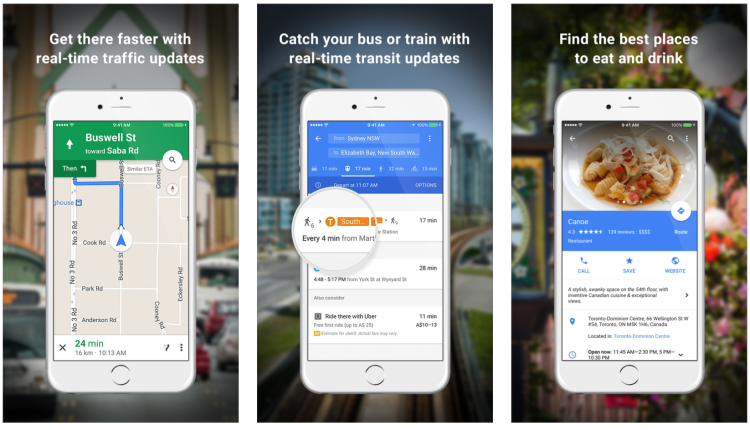
Google Maps (iOS | Android): A swiss-army knife of functionality, Google Maps was our go-to when trying to figure out where something was, and while walking around town. We starred local places we wanted to go (as opposed to Roadtrippers which was used to mark the major stops) and Google Maps told us the quickest way to get there. This was great for saving recommendations given earlier because once we arrived somewhere, we’d check to see if we had anything starred. Google Maps can also download maps of a limited size for offline use, but we would recommend either Pocket Earth (below) or Here Maps if you really want to limit your data usage. Of course, Google Maps can also be used as a turn-by-turn GPS and as a public transit guide.

Pocket Earth (iOS): While it costs a few bucks, Pocket Earth allows you to download maps of entire states, provinces, or countries. We’ve used this app on our previous trips and it’s great for saving data. Unlike Google Maps, the limitations are based only on how much free space you have on your phone. Other benefits of Pocket Earth are that it will also download Wikipedia articles for any places you’ve downloaded as well at city guides for major cities. An indispensable resource for the traveller who wants to know more history about that weird looking cemetery across the road.
If you’re a hiker, Pocket Earth has another edge over Google Maps since it shows many of the trails present in national, state, or even regional parks. While it’s not as detailed as some of the dedicated trail apps you can download, we found it more than useful enough to figure out where we were on our hikes, whether there was an awesome viewpoint just around the next corner, or whether we should just turn around. For our purposes, we didn’t feel like we needed anything more complicated.
While Pocket Earth does kind of offer turn-by-turn navigation, it is pretty terrible compared to what you can get from the apps above, so we wouldn’t recommend it.
Places to stop
In addition to figuring out where we were and how to get around, we relied on a bunch of apps and websites to help us figure out where to stop when we needed gas, a place to stay, or just wanted to see something cool.

GasBuddy (iOS | Android): This app really does two things. First, it tells you where the nearest gas stations are, and second, it tells you which of those gas stations have the cheapest gas. While some might make a detour to save 50 cents, we quickly decided that wasn’t really worth it. We used GasBuddy to find the cheapest prices that didn’t require a detour, and figured out the best places to stop and get gas based on what prices were like where we were heading.
The cheapest gas we came across was in east Texas (40 cents a liter) and the most expensive was in Vancouver. Also, did you know that in Oregon it’s illegal to pump your own gas?
It’s also good to note that most GPS devices and apps will include a function to tell you about gas stations along your route, so if you’re not too concerned about price (which honestly isn’t gonna be a huge difference), you can just depend on those.

RV Parky (iOS | Android): This app not only shows you the nearest campsites and RV parks, but it also shows nearby businesses that are RV-friendly, like Walmart. While there are other apps that might offer more details, photos, and the functionality to book sites, we found RV Parky to do just enough. With one look, we could see where the nearest legit campsites were and their approximate costs (which change depending on the season) or if there was a store parking lot somewhere that we could camp for free. While RV Parky has some reviews within the app, we would sometimes use Yelp (below) to supplement our research.

freecampsites.net (appears to have gone offline): When you’re travelling on the cheap, you want to pay as little as possible. And while Walmarts are free, they’re not exactly scenic. Amazingly, in the American west there are many options for basic (no facilities other than an outhouse and sometimes not even that), free camping. We were really surprised at just how beautiful some of these spots were. FreeCamping.net is a website where people can add spots they know about. Some are on government land where camping is allowed, others are regional parks, and some are just sketchy fields. While we discovered lots of awesome spots this way, you can never be certain the site is gonna work out. Because of the nature of this website, some of the campsites have ceased to exist, or weren’t really free to begin with. If you’re in BC, then you should also checkout the provincial government’s directory of recreation sites, many of which have breathtakingly beautiful and free camping.

Yelp (iOS | Android): Another really popular app, we used Yelp to figure out where to eat (fun fact: vegan food is everywhere!), get coffee, check out a local bookstore, or whether a potential destination was really worth going to. The other popular app in this category is Trip Advisor. Really, you can’t go wrong with either.

Atlas Obscura: Looking for something strange and off the beaten track? Atlas Obscura is a website directory of the strange and wonderful. We weren’t gonna go out of our way to see the graveyard of old Ford trucks in Florida, but since it was on the way, we’re glad we knew about it and were prepared to pull over to stop.

Chimani National Parks (iOS | Android): There doesn’t seem to be an official National Parks app for the US, but there are several third-party ones that do a pretty good job. Chimani’s was the most useful, easy-to-use, and elegant experience we could find. It showed a map of the US with all the parks and historic sites, so it was easy to see where they were located and which were near us. It also provided a brief description of each park and the ability to mark which ones you’d visited (55!!). While Chimani also provides separate, more detailed apps for the some of the bigger American parks, we regret to say we kept of forgetting to try them.
Recreation Equipment Inc (REI), a US coop the equivalent of Mountain Equipment Co-op (MEC), also has a national parks app, however it only has a handful of the hundreds that exist. What it does provide, are some pretty great maps.
There is no national parks apps for Canada. Well, okay, there are two you can download, but they are both useless pieces of junk that neither provide a list of parks, or any other relevant information to the road adventurer. Even the government website sucks, as there’s no way to see the parks on a map. We picked up a paper map when we bought our Canadian parks pass, but even though it was only printed last year, we kept on passing parks that weren’t on it. Get your shit together Parks Canada.
Social Media: Often, most of the places we hear about are from people we know both on and offline, so social media posts about others peoples’ adventures on Facebook and Instagram were a huge inspiration for us (hello #ladiesmountaineeringclub on Instagram). We could search for the names of places we were going and see what other people enjoyed most.
Internet browsing
Of course, using alls these apps requires internet, and while Starbucks was our best friend for really fast free internet in lots of places (we plugged a “Starbucks” search into our car GPS so we always knew where the next one was), we still had to stop at sketchy internet cafes, and dip into our mobile data regularly. A long the way, we found some really useful apps for helping with that.

My Data Manager (iOS | Android): Unlike Canada, mobile plans in the US are way more generous. The cheapest plan we could get included 5GB of high-speed LTE data, and unlimited low-speed data. But, let me tell you, that low speed data sucks when its 7 pm and you can’t find the campsite and you’re trying to load on Google Maps. So, we needed a way to track our data usage more intelligently. That’s where My Data Manager comes in. Not only does it keep you up-to-date with where you’re at with your monthly data quota, but it breaks things down so you can see how much data you should be using on a daily basis to ensure you don’t run out. That number is updated based on your usage, so if you have a 200mb quota for Tuesday and only use half, My Data Manager will recalibrate the next day to take that into account. It was great for the trip, and Ben is still using it now.

Roam Blocker (iOS): This is a Safari extension for iOS, but there are likely equivalent extensions for Android. Roam Blocker is a bit like an add blocker, but instead of blocking ads, it blocks images. If you’re doing some surfing sans-wifi and don’t need images, enabling this extension will dramatically cut down on your data usage.

TorGuard (iOS | Android): Sometimes you’re in a sketchy bar or cafe which has wifi but you don’t really trust the network (tip: never trust the network, even at Starbucks).In these scenarios, having a Virtual Private Network (VPN) like TorGuard is nice. Essentially, what TorGuard (and the hundreds of other services like it) does is encrypt your internet traffic and channel it through their servers, making it much more difficult for people in that sketchy bar or cafe to intercept your internet traffic (and passwords). TorGuard is the one we used, but again, there are lots, though some work better than others.
Banking
When you’re travelling, you have to pay for things, and it’s important to be able to keep track of what you’re buying, and to be able to move money around between accounts when necessary. To make this easy when you don’t want to haul out your laptop, you’ll need your bank’s official app, many of which now more easily allow you to track purchases, but if you really want the best way to track your purchases and monitor your budgets, you want …

Mint (iOS | Android): This is a website and app that connects to all your bank accounts. It then just watches for transactions, guesses at what they’re for (Starbucks = coffee, AT&T = mobile phone, Husky = gas), and files them under the appropriate budget. It makes it easy to see how you’ve been spending your money and track where you are in terms of your monthly budget. It will also send you warning messages if you approach or go over your budget, or make any unusually large purchases. Mint doesn’t do anything else like allow you to pay bills, it’s just an indispensable way to track your spending (and earning).
Entertainment
No road-trip is complete without some great listening material. While we considered audio books, we could never agree on what to “read” so podcasts and music were a huge part of the adventure. Most phones come with built-in music and podcast players, but make sure the things you’re listening to are actually stored on your phone. Those streaming music services might have huge libraries of music, but that will eat through your data plan like cookie monster devours chocolate chip cookies. Our podcast player of choice: Overcast (iOS).





